The Explorers' Garden
Several rose species are native to Canada, yet explorers and settlers began bringing new varieties as early as the 1600s. Many different types of roses are grown today, but the country’s northern climate poses difficulties. Most Canadian rose lovers have three options: move to southern British Columbia, cover the bushes extremely well each autumn or grow hardy roses.
The Explorer series is a set of hardy rose varieties developed by Agriculture and Agri-Food Canada to survive Canada’s harsh climate. Requiring minimal care and spraying, most can survive temperatures as low as -35°C when covered by natural snowfall. They are disease resistant, repeatedly flower throughout the summer, require only minimal pruning, are environmentally friendly and are available in a range of colours and sizes.
Article continues below
-
 Martin Frobisher (Released 1968) A very hardy, vigorous, upright rose that suckers freely, flowers well and is relatively disease-free. The blush-pink blooms are semidouble and slightly fragrant, but the bush habit is very open and sparse.Agriculture and Agri-food Canada
Martin Frobisher (Released 1968) A very hardy, vigorous, upright rose that suckers freely, flowers well and is relatively disease-free. The blush-pink blooms are semidouble and slightly fragrant, but the bush habit is very open and sparse.Agriculture and Agri-food Canada -
 Jens Munk (Released 1974) A rugosa hybrid with an upright arching form. The blooms are semi-double, medium-pink and fragrant. It flowers freely in June, has an excellent flush in the fall and some bloom in between.Agriculture and Agri-food Canada
Jens Munk (Released 1974) A rugosa hybrid with an upright arching form. The blooms are semi-double, medium-pink and fragrant. It flowers freely in June, has an excellent flush in the fall and some bloom in between.Agriculture and Agri-food Canada -
 Henry Hudson (Released 1976) A dense, relatively low-growing rugosa hybrid with good foliage. The pink buds open to semidouble white flowers. There are masses of bloom, but they don't drop cleanly.Agriculture and Agri-food Canada
Henry Hudson (Released 1976) A dense, relatively low-growing rugosa hybrid with good foliage. The pink buds open to semidouble white flowers. There are masses of bloom, but they don't drop cleanly.Agriculture and Agri-food Canada -
 John Cabot (Released 1978) A very thorny, large-arching kordesii hybrid that can be used as a climber. The double flowers are dark orchid-pink. Has two main flushes of bloom and repeats much better if grown in full sun and fed well.Agriculture and Agri-food Canada
John Cabot (Released 1978) A very thorny, large-arching kordesii hybrid that can be used as a climber. The double flowers are dark orchid-pink. Has two main flushes of bloom and repeats much better if grown in full sun and fed well.Agriculture and Agri-food Canada -
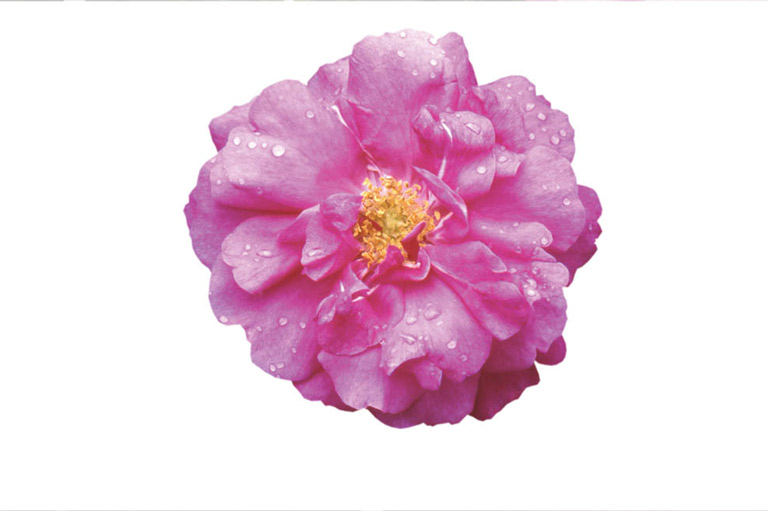 David Thompson (Released 1979) A rugosa hybrid that forms a large, round shrub. The blooms are semi-double, deep mauve-pink with some white streaks toward the centre. The flowers lack form, but repeat bloom is excellent.Agriculture and Agri-food Canada
David Thompson (Released 1979) A rugosa hybrid that forms a large, round shrub. The blooms are semi-double, deep mauve-pink with some white streaks toward the centre. The flowers lack form, but repeat bloom is excellent.Agriculture and Agri-food Canada -
 John Franklin (Released 1980) A small shrub with dark foliage and continuous bloom. The flowers are semi-double with dark-red frilly petals. Very susceptible to blackspot and more tender than most Explorers.Agriculture and Agri-food Canada
John Franklin (Released 1980) A small shrub with dark foliage and continuous bloom. The flowers are semi-double with dark-red frilly petals. Very susceptible to blackspot and more tender than most Explorers.Agriculture and Agri-food Canada -
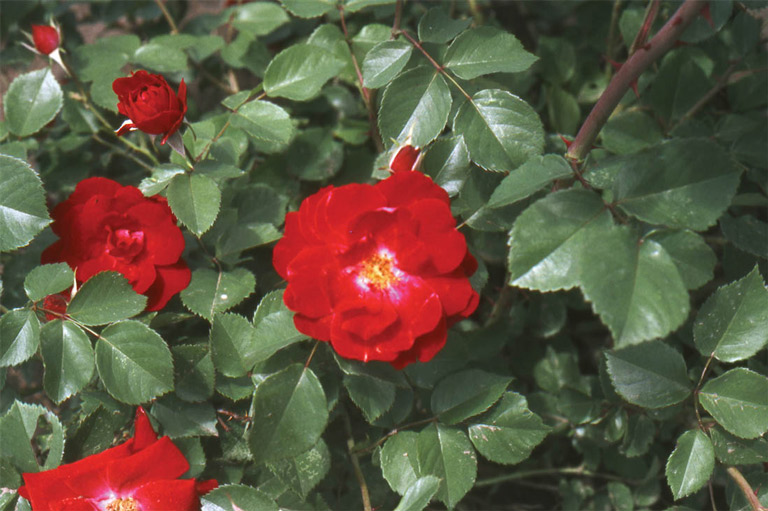 Champlain (Released 1982) A small shrub that shows its Floribunda heritage in its masses of bloom. The semi-double flowers are deep red and repeat profusely all season. One of the most popular (and least hardy) Explorers.Agriculture and Agri-food Canada
Champlain (Released 1982) A small shrub that shows its Floribunda heritage in its masses of bloom. The semi-double flowers are deep red and repeat profusely all season. One of the most popular (and least hardy) Explorers.Agriculture and Agri-food Canada -
 Charles Albanel (Released 1982) A low growing, very hardy rugosa hybrid with deep-pink, double, fragrant flowers that repeat very well. An excellent short shrub.Agriculture and Agri-food Canada
Charles Albanel (Released 1982) A low growing, very hardy rugosa hybrid with deep-pink, double, fragrant flowers that repeat very well. An excellent short shrub.Agriculture and Agri-food Canada -
 William Baffin (Released 1983) Most vigorous, one of the hardiest. Its upright form allows it to be used as a climber or a dense shrub, but it must be well fed to perform its best. The semi-double, bright-pink blooms are produced prolifically all season.Agriculture and Agri-food Canada
William Baffin (Released 1983) Most vigorous, one of the hardiest. Its upright form allows it to be used as a climber or a dense shrub, but it must be well fed to perform its best. The semi-double, bright-pink blooms are produced prolifically all season.Agriculture and Agri-food Canada -
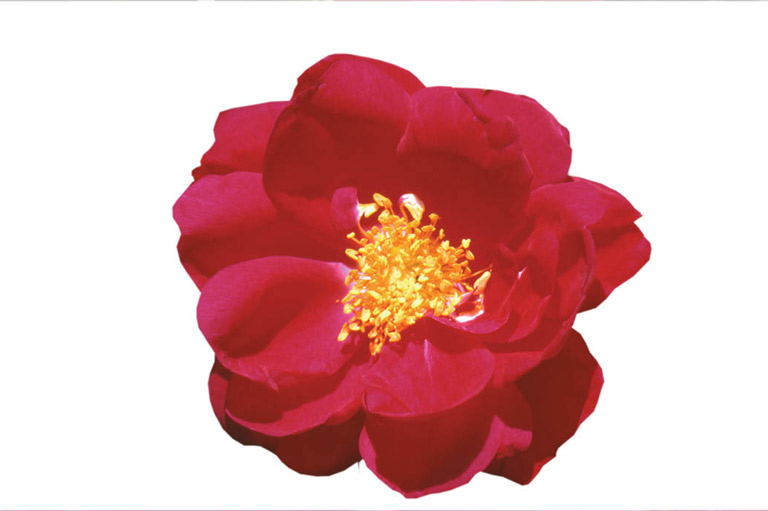 Henry Kelsey (Released 1984) A kordesii hybrid with semi-double, dark-red flowers with showy yellow stamens. It blooms prolifically, but the lower leaves may blackspot. This rose has hardiness problems in the coldest areas.Agriculture and Agri-food Canada
Henry Kelsey (Released 1984) A kordesii hybrid with semi-double, dark-red flowers with showy yellow stamens. It blooms prolifically, but the lower leaves may blackspot. This rose has hardiness problems in the coldest areas.Agriculture and Agri-food Canada -
 Alexander Mackenzie (Released l985) A vigorous arching shrub with soft-red, fragrant blooms and healthy foliage, except for a little blackspot on the lower leaves. It is relatively hardy but may suffer some dieback in very cold areas.Agriculture and Agri-food Canada
Alexander Mackenzie (Released l985) A vigorous arching shrub with soft-red, fragrant blooms and healthy foliage, except for a little blackspot on the lower leaves. It is relatively hardy but may suffer some dieback in very cold areas.Agriculture and Agri-food Canada -
 John Davis (Released 1986) A vigorous arching plant with healthy foliage that can be used as a climber if well fed. The medium-pink, lightly fragrant flowers repeat all season. The plant can survive temperatures of -35°C with no damage.Agriculture and Agri-food Canada
John Davis (Released 1986) A vigorous arching plant with healthy foliage that can be used as a climber if well fed. The medium-pink, lightly fragrant flowers repeat all season. The plant can survive temperatures of -35°C with no damage.Agriculture and Agri-food Canada -
 Captain Samuel Holland (Released 1992) A vigorous kordesii hybrid with long, arching shoots that can be used as a pillar or climber. The clusters of deep-pink flowers open flat. The plant is extremely healthy, hardy and repeats well.Agriculture and Agri-food Canada
Captain Samuel Holland (Released 1992) A vigorous kordesii hybrid with long, arching shoots that can be used as a pillar or climber. The clusters of deep-pink flowers open flat. The plant is extremely healthy, hardy and repeats well.Agriculture and Agri-food Canada -
 Frontenac (Released 1992) This compact shrub has semi-double, medium-pink flowers with white at the base of the petals. Frontenac is very floriferous, healthy, hardy and makes an excellent small specimen.Agriculture and Agri-food Canada
Frontenac (Released 1992) This compact shrub has semi-double, medium-pink flowers with white at the base of the petals. Frontenac is very floriferous, healthy, hardy and makes an excellent small specimen.Agriculture and Agri-food Canada -
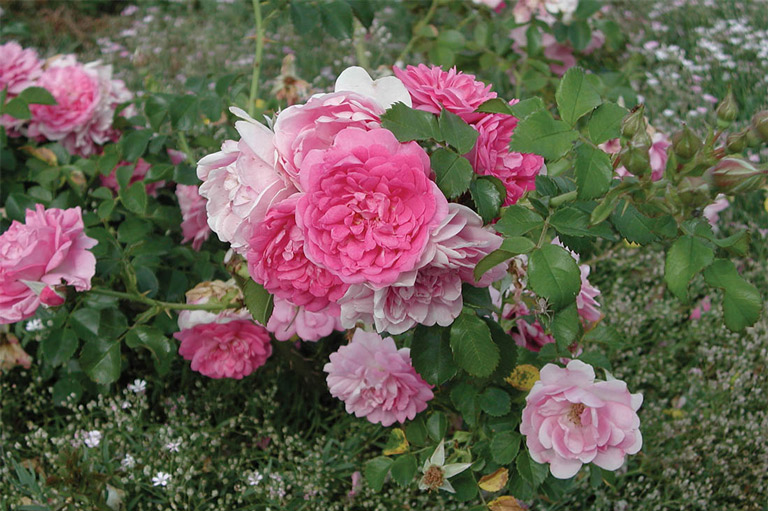 Louis Jolliet (Released 1992) A large shrub with long, thorny canes. The plant blooms profusely and the double, deep-pink decorative flowers appear in clusters along the stems.Agriculture and Agri-food Canada
Louis Jolliet (Released 1992) A large shrub with long, thorny canes. The plant blooms profusely and the double, deep-pink decorative flowers appear in clusters along the stems.Agriculture and Agri-food Canada -
 Simon Fraser (Released 1992) A small, sprawling shrub with glossy leaves and salmon-pink flowers. Often a young bush produces single flowers, but as the plant matures the flowers grow several more petals. Seems prone to mildew and blackspotAgriculture and Agri-food Canada
Simon Fraser (Released 1992) A small, sprawling shrub with glossy leaves and salmon-pink flowers. Often a young bush produces single flowers, but as the plant matures the flowers grow several more petals. Seems prone to mildew and blackspotAgriculture and Agri-food Canada -
 George Vancouver (Released 1994) A semi-double, decorative dark-red bloom that becomes pink with age and repeats well all seasonAgriculture and Agri-food Canada
George Vancouver (Released 1994) A semi-double, decorative dark-red bloom that becomes pink with age and repeats well all seasonAgriculture and Agri-food Canada -
 Quadra (Released 1995) A velvety red rose with very double blooms. They have a light fragrance, bloom in clusters and repeat well all season. The plant is disease-free, hardy and can be used as a climber.Agriculture and Agri-food Canada
Quadra (Released 1995) A velvety red rose with very double blooms. They have a light fragrance, bloom in clusters and repeat well all season. The plant is disease-free, hardy and can be used as a climber.Agriculture and Agri-food Canada -
 Marie-Victorin (Released 1998) The buds and newly opened flowers are pale peach, which is an unusual colour in a hardy rose.Agriculture and Agri-food Canada
Marie-Victorin (Released 1998) The buds and newly opened flowers are pale peach, which is an unusual colour in a hardy rose.Agriculture and Agri-food Canada -
 William Booth (Released 1999) The last rose in the Explorer series. The single, red flowers have white eyes and repeat well. The bush is quite vigorous and can be used as a pillar.Agriculture and Agri-food Canada
William Booth (Released 1999) The last rose in the Explorer series. The single, red flowers have white eyes and repeat well. The bush is quite vigorous and can be used as a pillar.Agriculture and Agri-food Canada -
 Explorer Rose: Lambert Closse (Released 1995)Agriculture and Agri-food Canada
Explorer Rose: Lambert Closse (Released 1995)Agriculture and Agri-food Canada -
 Explorer Rose: J.P. Connell (Released 1987Agriculture and Agri-food Canada
Explorer Rose: J.P. Connell (Released 1987Agriculture and Agri-food Canada -
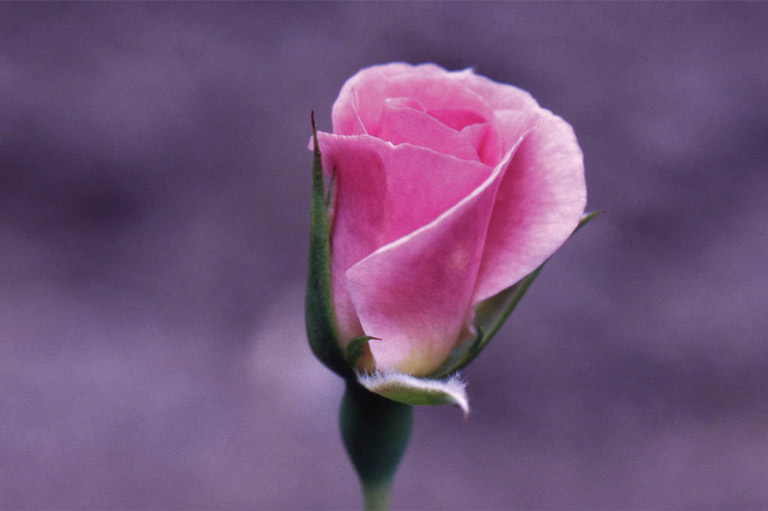 Explorer Rose: Royal Edward (Released 1995)Agriculture and Agri-food Canada
Explorer Rose: Royal Edward (Released 1995)Agriculture and Agri-food Canada -
 Explorer Rose: De Montarville (Released 1997Agriculture and Agri-food Canada
Explorer Rose: De Montarville (Released 1997Agriculture and Agri-food Canada -
 Explorer Rose: Nicolas (Released 1996)Agriculture and Agri-food Canada
Explorer Rose: Nicolas (Released 1996)Agriculture and Agri-food Canada
In 1886, the Canadian government established a system of experimental farms and began a program of breeding and testing hardy roses. Hardy rose breeding by Agriculture and Agri-Food Canada has mainly operated at the Central Experimental Farm in Ottawa (and later at L’Assomption, Quebec). Dr. William Saunders, the first director of the Central Experimental Farm, made a number of crosses between hardy shrub roses. Following Saunders, Isabella Preston continued to breed them from 1920 to the 1940s. She released about 20 hardy shrub roses, of which only a few are grown today.
The rose breeding program was suspended following Preston’s retirement, but was revived in the 1960s under Dr. Felicitas Svejda, who initiated the Explorer series of hardy shrub roses. The Explorer roses fall into two categories. Although some owe their genes to several species, most are either simple or complex hybrids of two classes of roses. The first, Rosa rugosa introduced to North America from Asia, has three key advantages over other roses: it is very cold hardy, it grows on its own roots and it is salt-tolerant. The other, Rosa kordesii, a unique cross that was released in 1952, combines the hardiness of Rosa rugosa with the large flowers of garden roses.
Dr. Svejda chose to name the roses she was cultivating after Canadian explorers, hoping they would prove as tough and versatile as their namesakes. However, the last of the series can only be tangentially linked to the theme of exploration. Names such as William Booth (founder of the Salvation Army) and Frère Marie-Victorin (a Canadian monk) loosely relate. Then, there are two from the series (Nicolas and Royal Edward) sporting such generic appellations that we at The Beaver are hedging our bets. (We gratefully welcome our readers’ feedback regarding this mystery.) Still, the Explorer rose series continues to live up to Dr. Svejda’s original intent, trailblazing their way to gardens around the world.

MARTIN FROBISHER
Martin Frobisher (1539–1594) led three voyages in the 1570s searching for a Northwest Passage to Asia. He discovered Resolution Island, which he claimed for England, and Frobisher Bay. On his third trip in 1578, Frobisher led 15 ships up the Hudson Strait and set up a temporary mining settlement near what is now known as Frobisher Bay.
JENS MUNK
Jens Munk (1576–1628) was a Danish explorer who tried to find a Northwest Passage through Hudson Bay in 1619. At this time, only the southern portion was known as “Hudson Bay.” Munk’s account of the bay is the first to treat the inland sea as a whole, and his map the first on which the whole of the bay is depicted. Only he and two others out of a crew of 64 survived the winter there.

HENRY HUDSON
Henry Hudson (1570–1611) failed to find a polar route to Asia on his first two voyages (in 1607 and 1608), discovering the mouth of the Hudson River instead. In 1610 he sailed through Hudson Strait into James Bay and opened a sea route to North America’s interior. After a hard winter, his crew mutinied and set him, his son and seven others adrift to a certain, quick demise.

JOHN CABOT
John Cabot (1450–1498) was a Venetian explorer and navigator whose English-backed voyages were the basis of Britain’s claim to Canada. He is the first-known European to land in North America. Cabot is thought to have landed at either Cape Breton Island, Labrador or Newfoundland in 1497, marking the beginning of British colonization of the New World.

DAVID THOMPSON
David Thompson (1770–1857) was an English-born Canadian fur trader, explorer and surveyor. Working for the Hudson’s Bay Company at 14, he was the first to make full maps of the western territory. He found the Columbia River, a trade-route connection from the Rocky Mountains to the Pacific Ocean. Thompson also charted the boundary between Canada and the U.S. from the St. Lawrence River to Lake of the Woods.

JOHN FRANKLIN
John Franklin (1786–1847) was an English explorer who made three trips to the Arctic in search of the Northwest Passage. The parties produced excellent maps on the first two voyages, with more than 880 km of new coastline mapped on the first. Franklin disappeared on the third voyage, sailing into Lancaster Sound and vanishing. It was later discovered that he and his crew perished off King William Island.

SAMUEL DE CHAMPLAIN
Samuel de Champlain (1567–1635) is considered the father of New France. This explorer mapped much of northeastern North America, founding the first settlement of Quebec City in 1608. Champlain headed the settlement until the English attacked and took it over in July 1629. Champlain returned to France, but returned as the governor of Quebec City alter a French-British peace treaty in 1632. He died three years later.
CHARLES ALBANEL
Charles Albanel (1616–1696) was a Jesuit priest and missionary. In 1649, he arrived at Tadoussac, Quebec. When the Hudson’s Bay Company was just beginning operations, he led a party that went by the Saguenay River, Mistassini Lake and the Rupert River to Hudson Bay claiming the region for France. Alter returning to Canada in 1676, he served at missions in western Canada before he died at Sault Saint Marie.

WILLIAM BAFFIN
William Baffin (1584–1622) was an English navigator who explored the northern coast of the Canadian Arctic’s largest island in 1616. Baffin was sent on two expeditions in search of the Northwest Passage. The first expedition (1615) vainly tried to find a channel in Hudson Bay north of Southampton Island. The second went northwest through Davis Strait, leading to the exploration of today’s Baffin Bay and Baffin Island.

HENRY KELSEY
Henry Kelsey (1667–1724) joined the Hudson’s Bay Company in 1684 and was its first inland explorer and fur trader. He was involved in some of the earliest discoveries of the interior of northern North America. He extended the Hudson’s Bay Company’s trade to the Saskatchewan River and opened up the Prairies.

ALEXANDER MACKENZIE
Alexander Mackenzie (1764–1820) was a Scottish-born fur trader and explorer. In 1789, working for the NorthWest Company, Mackenzie followed what is now known as the Mackenzie River. He’d hoped that it would lead to the Pacific Ocean, but instead found that it flowed into the Arctic Ocean. He eventually did reach the Pacific in 1793.

JOHN DAVIS
John Davis (1550–1605) was an English navigator and explorer who conducted three Arctic expeditions in an attempt to find the Northwest Passage. Along the way, he charted the coasts of Greenland, Baffin Island and Labrador. He discovered the strait, now named for him, between Canada and Greenland in 1587. In 1592, he discovered the Falkland Islands.

CAPTAIN SAMUEL HOLLAND
Captain Samuel Holland (1728–1801) left his native Holland to join the British army. A Royal Engineer, he was appointed surveyor-general of Quebec and northern North America, carrying out the first surveys of Prince Edward Island and Cape Breton. Holland’s survey of P.E.I. divided the island into a series of townships to prepare for a feudal land system.

FRONTENAC
Louis de Buade, Comte de Frontenac (1622–1698) was made governor general of New France in 1672 and again in 1689. He helped to expand the French fur trade and is noted as a prime instigator of French expansion in North America. He also defended New France against attacks by the Iroquois Confederacy and the English colonies.

JOUIS JOLLIET
Louis Jolliet (1645–1700) was born in Quebec and left the priesthood to become a fur trader. He was sent in 1672 to explore the Mississippi River, which was then only known through second-hand accounts. Jolliet entered the Mississippi and followed it to the mouth of the Arkansas, verifying that the Mississippi flowed into the Gulf of Mexico and not into the Pacific Ocean.
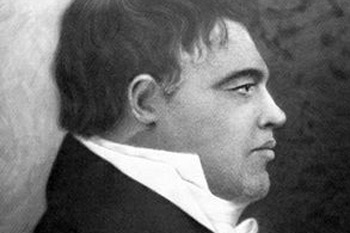
SIMON FRASER
Simon Fraser (1776–1862) was an American-born fur trader and explorer. He joined the North West Company in 1792, and was sent in 1805 to the Rocky Mountains, where he established several fur-trading posts in present-day British Columbia. In 1808 he explored the treacherous Fraser River, mistakenly believing it to be the Columbia River.

GEORGE VANCOUVER
George Vancouver (1757– 1798) was an English navigator who accompanied Captain James Cook on his second and third voyages, and later took command of a naval expedition exploring the coasts of Australia, New Zealand and Hawaii (1791–1792). Vancouver later charted much of the west coast of North America between southern Alaska and California.

QUADRA
Juan Francisco de la Bodega y Quadra (1743–1794) was a South American navigator born in Lima, Peru. He won a high rank in the Spanish navy, explored the coasts of California and constructed a special chart of them. As the Spanish commissioner, he negotiated with George Vancouver for the return of Nootka (on Vancouver Island) to British hands.

MARIE-VICTORIN
Frère Marie-Victorin (1885–1944) was a brother in the Écoles chrétiennes community, a botanist and a teacher who devoted his life to the study and classification of North-American plants. He was professor of botany at the University of Montreal and took part in the founding of the Montreal Botanical Garden.
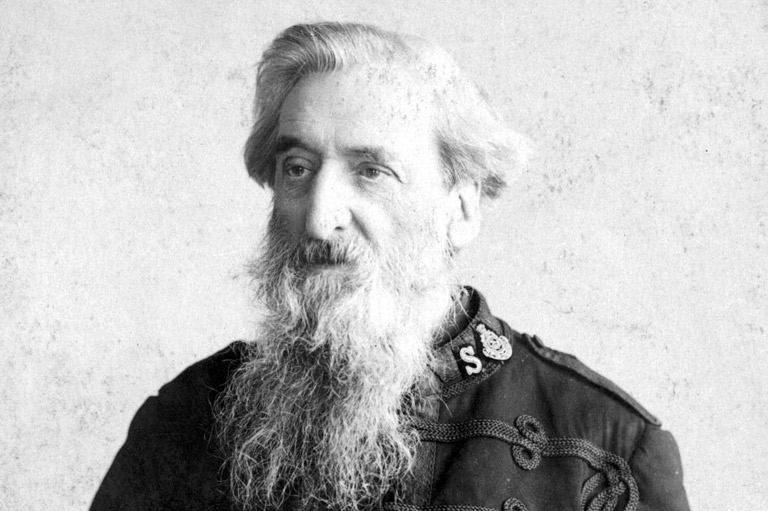
WILLIAM BOOTH
William Booth (1829–1912) was an English revivalist preacher, who was concerned with the physical and spiritual needs of those to whom he preached. Booth founded the Salvation Army in 1865.
Themes associated with this article
Advertisement




